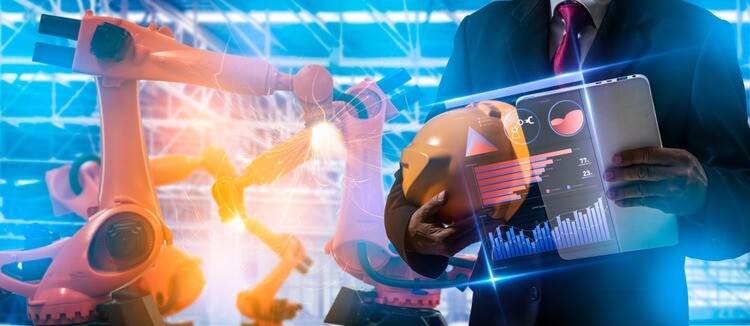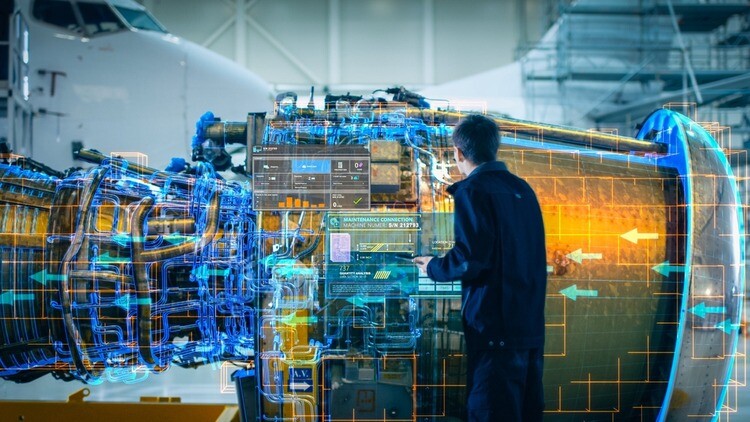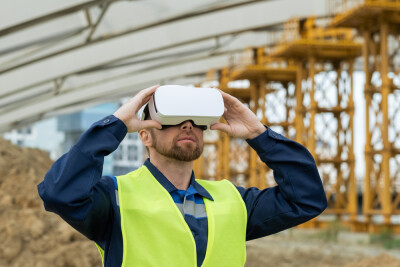As we approached the end of 2022 at Geo Week News, we put together a list of trends we were looking forward to in the coming year across the reality capture, geospatial, and AEC industries. Among them was the leveraging of game engines for digital twins. In that piece we were looking specifically at the geospatial industry, focusing on large city- or even nation-scale models, but the concept holds true for smaller-scale digital twins like individual buildings, factories, and other facilities. We certainly wouldn’t claim to have been far ahead of the curve, as things have been trending in this direction for a few years now, but it’s a merging of industries which is only gaining speed.
Earlier this year I also wrote about being a relative newcomer to the industry, and one of the things that fascinates me the most about this space is the constant merging of seemingly unrelated industries and technologies, a trend our Geo Week show exemplifies. I wouldn’t classify myself as a gamer by any stretch, but I did play my fair share growing up, and this merging of a childhood hobby of mine and the industry in which I work as an adult has been an unexpected development.
Because of all this, I was excited to recently get the chance to speak with Rory Armes, who is right in the middle of this merger, to talk about the origins, benefits, and future of gaming engines being used for digital twins. Armes’ background is in the video game industry, having worked for EA, and he serves as a Vice President at Unity Industry as a Global Head of Delivery Studios. Specifically, he works with industrial customers who do exactly what we’ve been talking about, leveraging game engines for their digital twins.
Unity is no stranger to this merging of industries, as they – along with the Unreal Engine from Epic Games – are one of the companies at the forefront of the transition. In fact, just this year they released a new suite of projects aimed specifically at industrial clients with Unity Industry, one of the clearest moves into the non-gaming world the company has made to date. They were also recently announced as a partner in application development for Apple’s Vision Pro, the company’s mixed reality headset.
That particular piece was not part of my conversation with Armes, and presumably much of that development will be on the gaming side, but given how mixed reality is being used in industrial settings now it’s not unreasonable to think that could be a piece of that partnership either now or down the line.

That said, one of the things I was most interested in diving into with Armes was actually the early stages of this transition towards gaming engines. Often when these types of industrial mergers happen, it occurs so quickly that the origins can end up lost in the transition, but I wanted to get a feel for how this started. Armes says that, in his experience, a lot of the initial transition came from the industry side rather than the game engines, as the former were looking for better rendering of their new 3D models than were currently available to them.
The other interesting piece of this transition towards game engines that Armes brings up simply has to do with the generation coming up through the professional world. It’s something that seems obvious in retrospect, but didn’t necessarily click with me before. Simply put, the people in all industries starting to occupy decision-making roles are the ones who grew up playing video games, and many of them continue to play newer games with even better graphic capabilities.
All of which is to say, when they started looking at the rendering with which they’re models were currently working, they were underwhelmed. Armes told Geo Week News, “All of the engineers, and all of the smart young people that are coming in, they’re going home and playing Fortnite, or they’re going home and playing Battlefield. So they’re thinking, Okay, there’s a different way to visualize this.”
We also talked a little bit about who, exactly, are the people transitioning towards these game engines for digital twins. In my head, I had been thinking about two distinct buckets of facility managers and larger-scale geospatial models for things like cities and entire nations. Armes disagreed, though, thinking about all of it more as one continuum. He said he sees them as “narrowing versions of a large world and model,” noting that they may have different specific end goals, but many of the functions are the same.
Regardless of end use case, he says on his end it’s always about creating “a visual narrative of a space.” He continued, “Now we’re going to put something into that space that gives them value. A city planning is different than a factory, but it’s still us being able to walk around [the space].”
In Armes’ case, his experience certainly seemed to lie more within the smaller-scale, facility side of things, where he said one of the areas in which the functionality of these engines’ rendering capabilities is most effective is with training. Rather than having to shut systems on the floor down, or relying on less interactive methods, training for these facilities can be done within these highly accurate models, leaving employees better prepared without having to sacrifice operational time for the facility.
More generally, simulations are at the heart of gaming engines’ use for digital twins. Given the high rendering capabilities as well as the ability to faithfully abide by the laws of physics within the systems, all scopes of models can run useful simulations. Those should only become more powerful, according to Armes. He mentions the advancements being made in the reality capture space, both in terms of capabilities and accessibility, which should lean to even better and broader data for these models. And, of course, the idea of artificial intelligence made it into the conversation. AI is already a big part of these models and their functionalities, but as these algorithms and models grow, he believes we’ll start to see even more predictions being made with AI rather than insights which are analyzed by humans.
With the idea of spatial computing only becoming more mainstream after Apple’s Vision Pro announcement, and the need for accurate maps for autonomous vehicles, the geospatial industry is only going to gain prominence in the professional world as a whole. That trend is already ongoing, and the result is going to be even more cross-industrialization like we’re seeing with geospatial and AEC leaning on the game industry. It's going in both directions as well, with companies like Third Floor using reality capture and other traditional geospatial technologies to assist in making movies and television.
This merging of expertise is crucial for continued innovation, and we’re only at the beginning, both of gaming and geospatial’s intersection and these types of collaborations in general.





.jpg.small.400x400.jpg)

